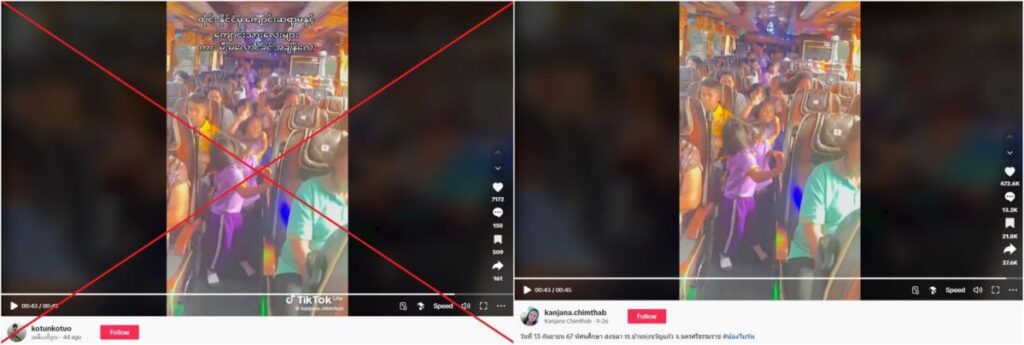In October 2024, tragic news emerged from Thailand as a devastating bus fire claimed the lives of 20 children and three teachers, making it one of the deadliest road incidents in the country in a decade. Following the incident, a video surfaced on TikTok that depicted children dancing in a vehicle, leading to widespread claims on social media that it was footage of students from the affected school. The video generated significant attention, amassing over 499,000 views, and was shared with superimposed Burmese-language text suggesting it showed Thai teachers and students just before the bus fire. However, a fact-checking investigation revealed that the video was not related to the fire and had been filmed weeks prior, showing students from a different school.
Upon further examination, it was discovered that the clip actually originates from September 13, 2024, during a field trip to Songkhla province undertaken by students from Ban Thung Kwan Kaew School in Nakhon Si Thammarat. The video was publicly shared on TikTok as early as September 26, along with Thai-language captions that provided context about the field trip. This timeline established that the footage was captured well before the tragic events of the bus fire that occurred on October 3, 2024, disputing any association with the disaster. The original TikTok user, Kanchana Chimthab, confirmed that she recorded the video during the field trip and that it had no connection to the bus fire.
The spread of misinformation following the bus fire was amplified by various social media platforms, with claims appearing in multiple languages, including Burmese, Thai, and English. This situation highlights the rapid dissemination of misleading information in the digital age, particularly in the wake of tragic events. As the video continued to be shared, it became increasingly important for fact-checkers, like AFP, to verify the origins of such content to prevent a further spread of false narratives and to honor the memory of those affected by the real tragedy.
Additionally, the inquiry into the video revealed corroborative evidence from the school’s official communication channels. A press release on the Ban Thung Kwan Kaew School’s Facebook page featured photos from the field trip, showcasing students dressed in the purple uniforms seen in the original video. The release outlined activities enjoyed by students and parents during the trip, solidifying the fact that the video content was legitimate and not related to the bus fire in any way. This contrasting detail also underscored that the children impacted by the fire belonged to Wat Khao Phraya Sangkharam School, identifiable by their orange uniforms.
The prominent circulation of the misleading footage raises significant issues surrounding the authenticity of shared content in social media. Misinformation can deeply affect public perception, sowing confusion and misinformation surrounding a tragedy. The case draws attention to the necessity for users to critically analyze content before sharing it, recognizing the implications that accompanying narratives may have on the understanding of an event. Situations like this reveal how social media can sometimes serve as a breeding ground for false claims, especially when users rush to share emotionally charged content without verifying its accuracy.
In conclusion, the tragic bus fire in Thailand stands as a stark reminder of the fragility of life and the sensitivity required when discussing such events. The subsequent misattribution of the dancing children’s footage serves as a cautionary tale about the power and pitfalls of social media. It emphasizes the importance of fact-checking and the role that reliable sources play in combating the spread of misinformation. As the digital landscape continues to evolve, so too must our approaches to discerning truth from falsehood, particularly in times of grief where accurate narratives hold significant intrinsic value.

